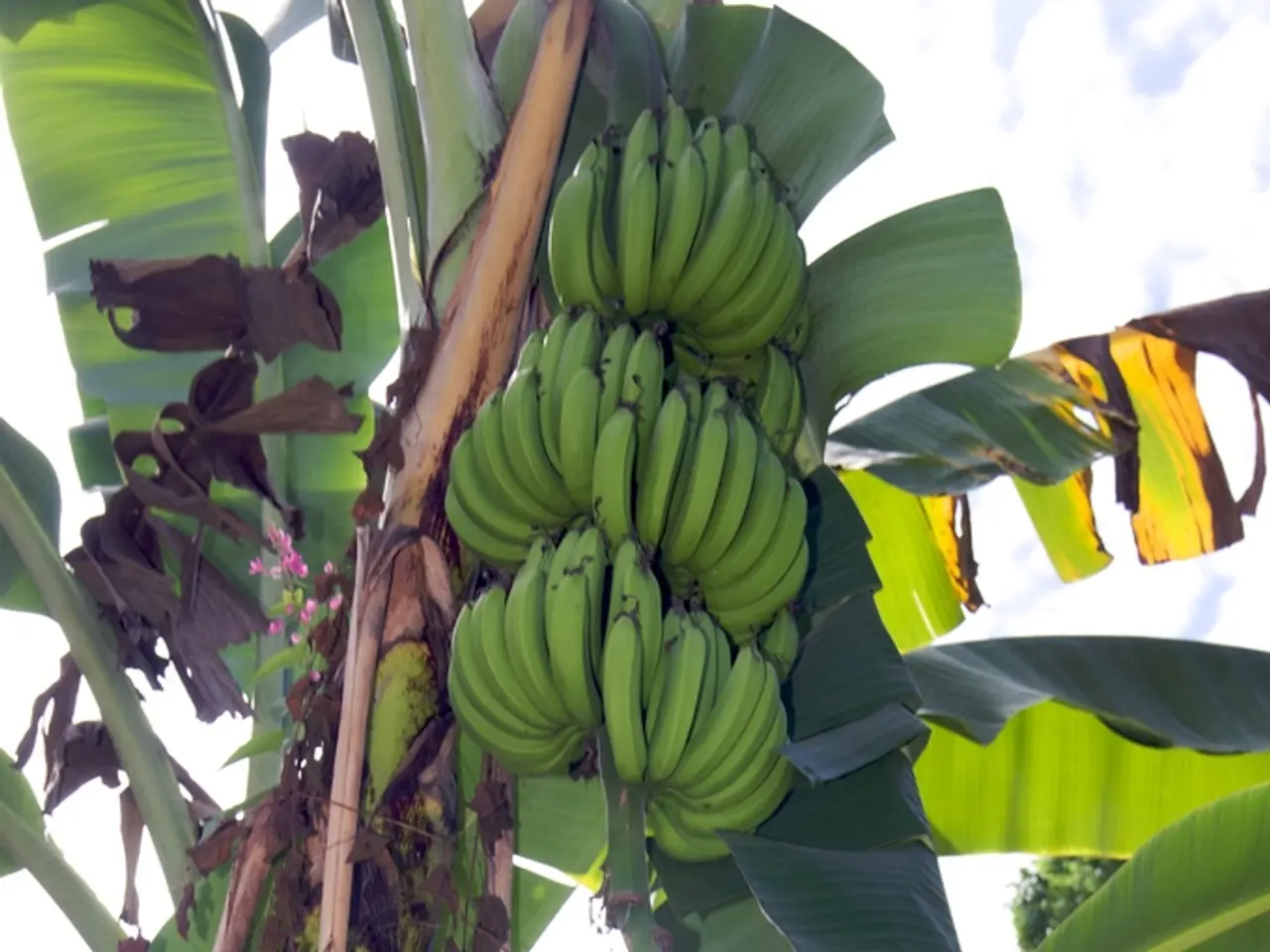Uncovering Surprising Banana Plant Applications You Might Not Be Aware Of
Banana plants, often associated with their sweet, yellow fruit, offer a wealth of creative uses that extend far beyond eating. In various cultures, particularly South and Southeast Asia, and certain African regions, the banana plant is a multi-purpose resource with each part valued for specific culinary and practical applications.
Culinary Delights
Banana Fruit
The banana fruit is enjoyed raw, blended into smoothies, or used in cakes, pancakes, desserts, and even as gluten-free banana flour. Plantains, the starchy banana varieties, are cooked in various ways, including crunchy, boiled, or curried.
Banana Flowers (Banana Hearts)
Considered a vegetable in South and Southeast Asian cuisines, banana flowers have a flavor akin to artichoke. They are used in dishes like Filipino kilawin na pusô ng saging and can be found in Indian and Southeast Asian cuisines, such as Mocha Chingri, a Bengali dish.
Banana Leaves
Large, waterproof banana leaves are used as eco-friendly disposable food wrappers or plates, especially in South and Southeast Asia. They are widely used in cooking styles like Indonesian pepes and botok, where food wrapped in banana leaves is steamed, boiled, or grilled, imparting subtle flavors and preventing burning. In South India, banana leaves serve as plates, and dried leaves can be fashioned into cups for liquids.
Banana Stem/Trunk Core
The tender inner core of the banana stem is edible and appears in various Southeast Asian dishes. It is a key ingredient in Burmese mohinga, Filipino inubaran and kadyos, manok, kag ubad, and northern Thai kaeng yuak curry.
Banana Peels
Nutritious banana peels can be mashed and simmered to make caramel or other preparations.
False Banana Plants
The pseudostems and corms (underground stems) of false banana plants are edible after cooking. They are staple famine foods in some African communities, processed into items like kocho (a fermented bread-like food), bulla (a white powder for doughs), and amicho (boiled corm resembling potatoes). These plant parts are also used medicinally and for prolonged storage after fermentation.
Daily Life and Practical Uses
Banana Leaves as Food Containers and Plates
Banana leaves' waterproof and large nature makes them ideal environmentally friendly packaging, plates, and even cups once dried.
Medicinal Uses
Various parts, particularly from false banana species, are used in traditional medicine, such as boiled mixtures combined with milk to heal bone fractures.
In summary, the banana plant is a versatile resource with each part valued for specific culinary uses and practical functions. This creative utilization spans many cultures, offering a testament to the plant's versatility and importance in various communities.
- The banana plant's tender inner core is used in Southeast Asian dishes, making it a key ingredient in Burmese mohinga, Filipino inubaran, and northern Thai kaeng yuak curry.
- In tropical regions, banana leaves are utilized as eco-friendly food wrappers or plates, imparting subtle flavors and preventing burning.
- Banana peels can be mashed and simmered to make caramel or other preparations, demonstrating their nutritious value.
- False banana plants' staple edible corms are processed into various food items in African communities, such as kocho, bulla, and amicho.
- Traditional medicine often employs various parts, particularly from false banana species, like boiled mixtures for healing bone fractures.
- In South and Southeast Asia, the banana stem is used creatively in home-and-garden applications as open-air containers to store food, while dried leaves serve as cups for liquids.
- Banana plants, being a multifaceted resource with culinary, practical, and medicinal value, underscore the role of science and sustainable living in highlighting health-and-wellness, food-and-drink, and lifestyle benefits from using this versatile plant.




